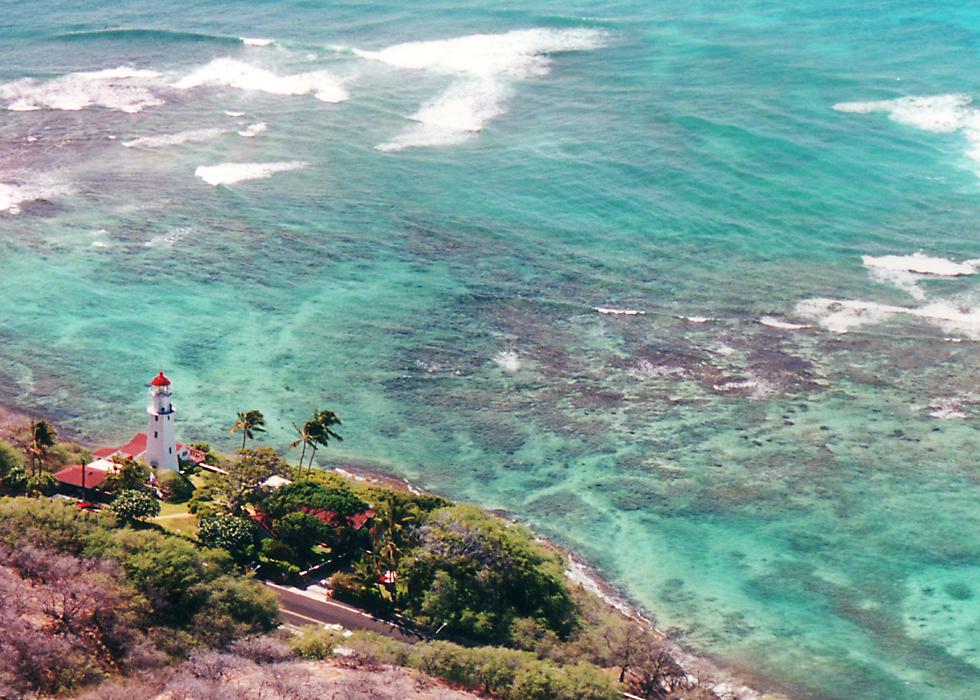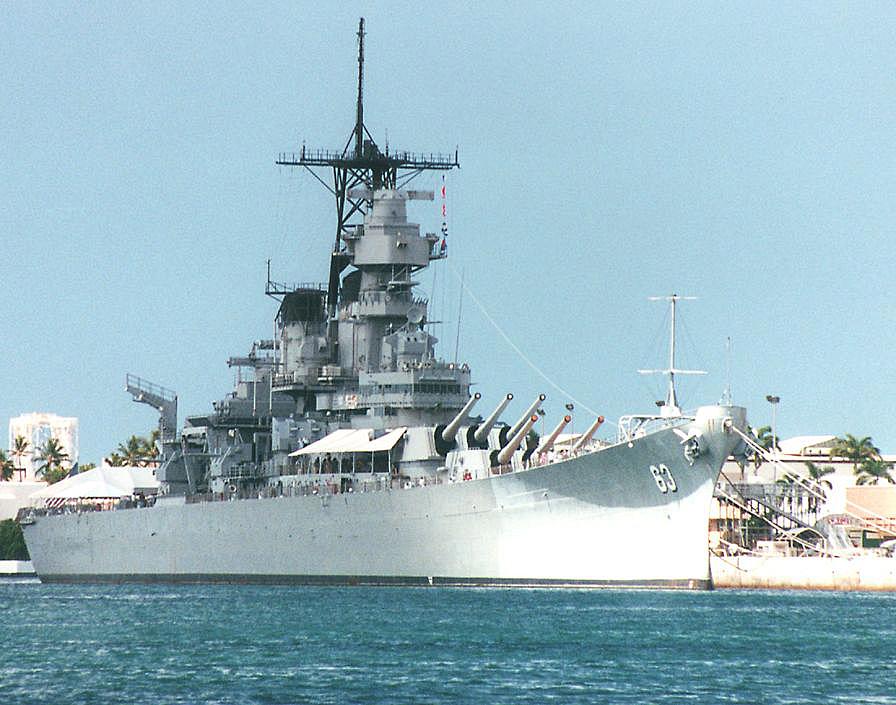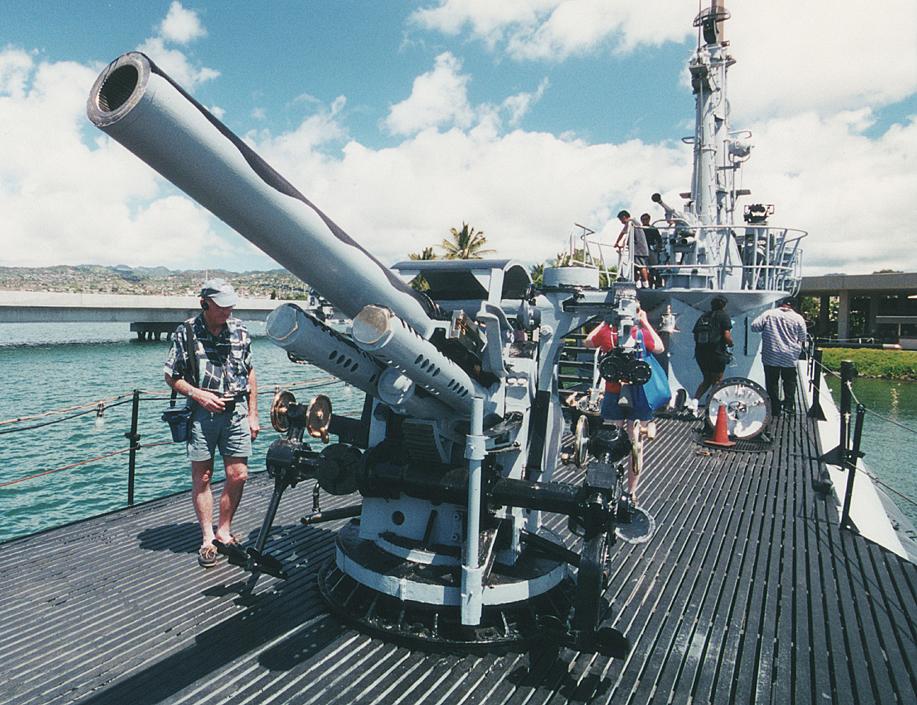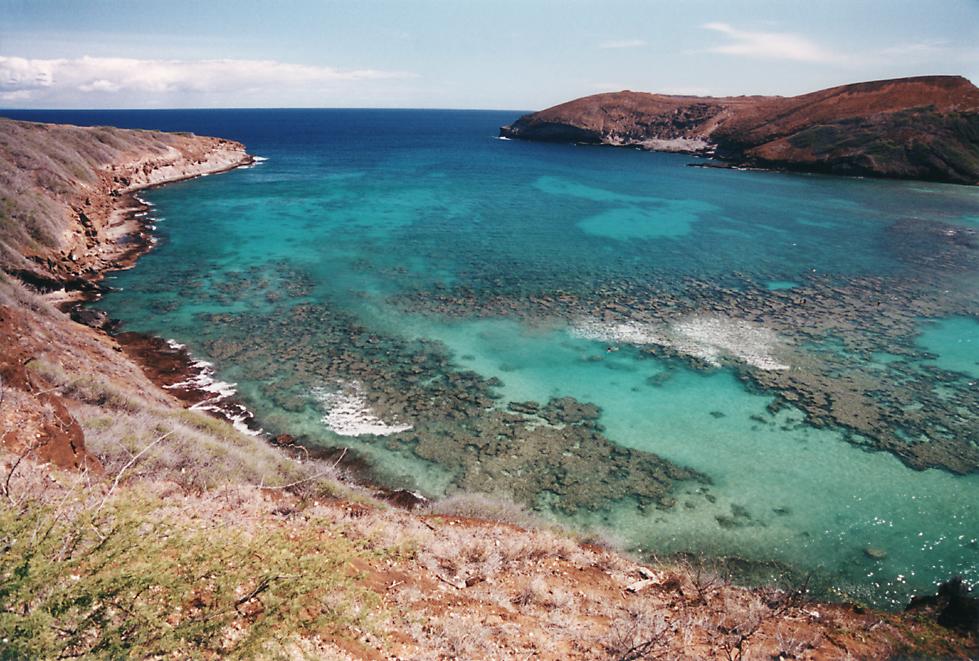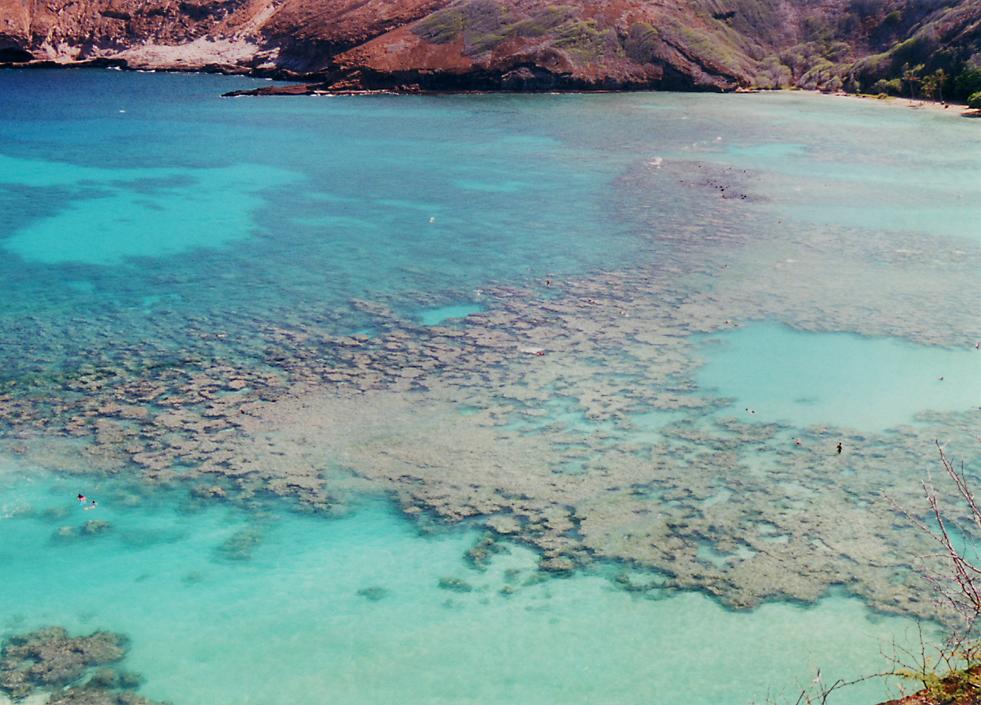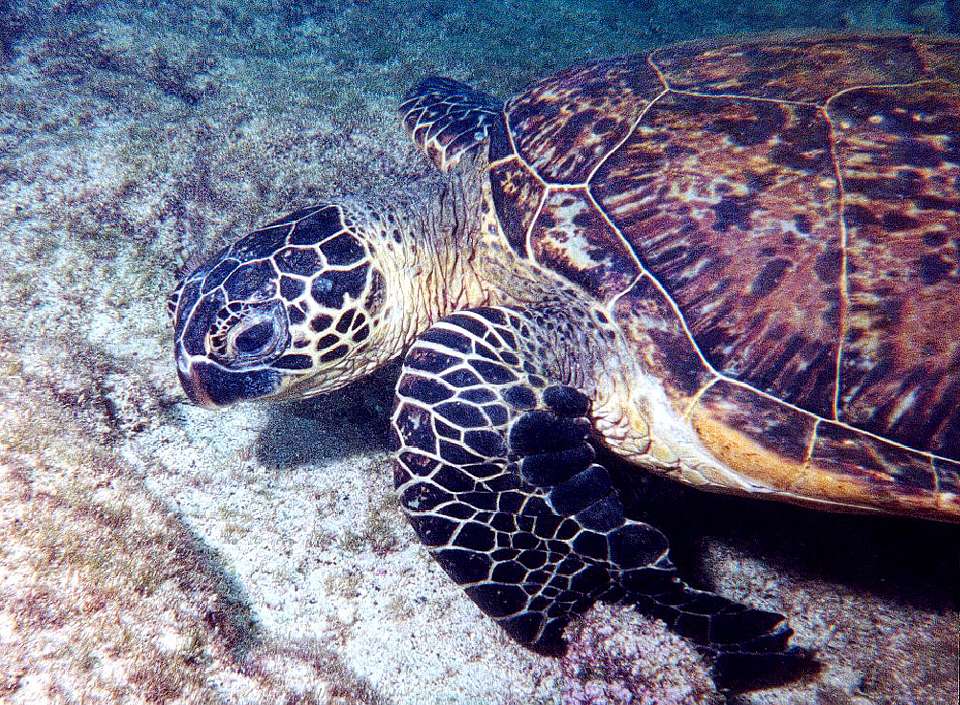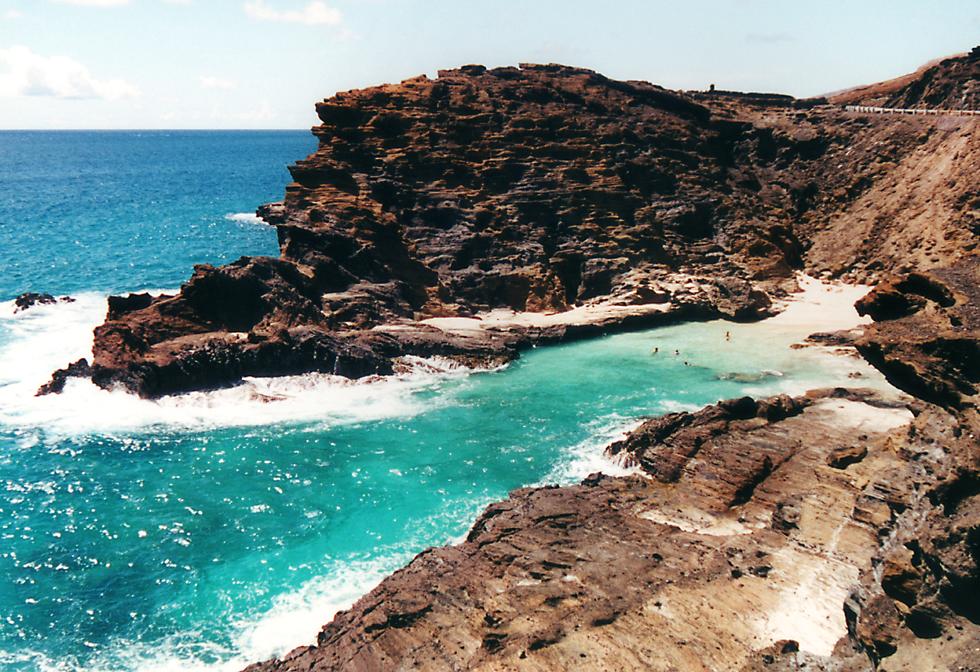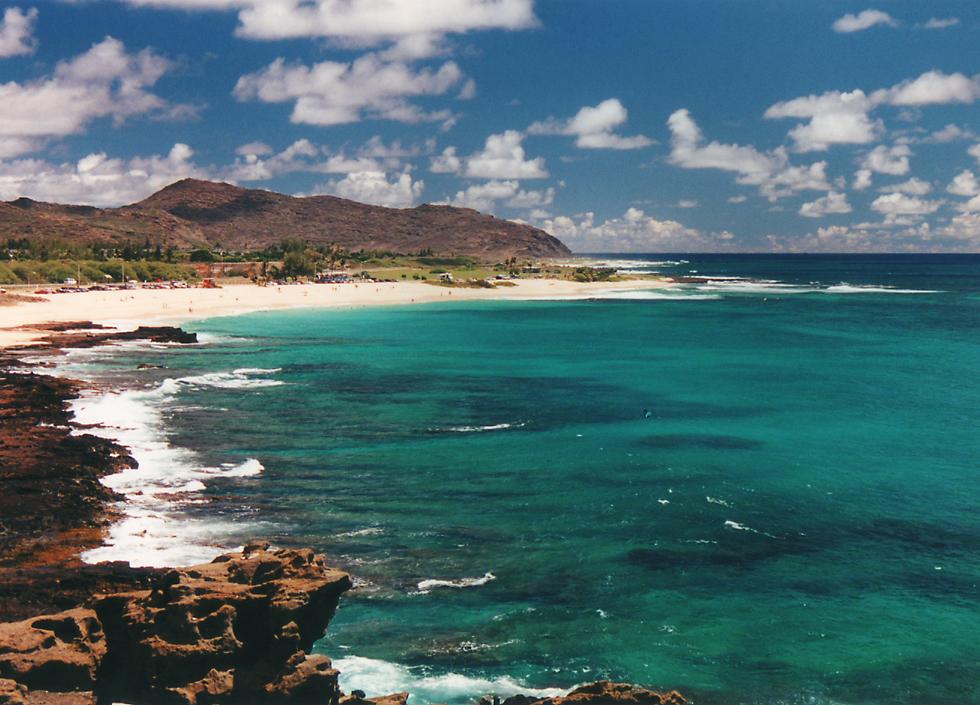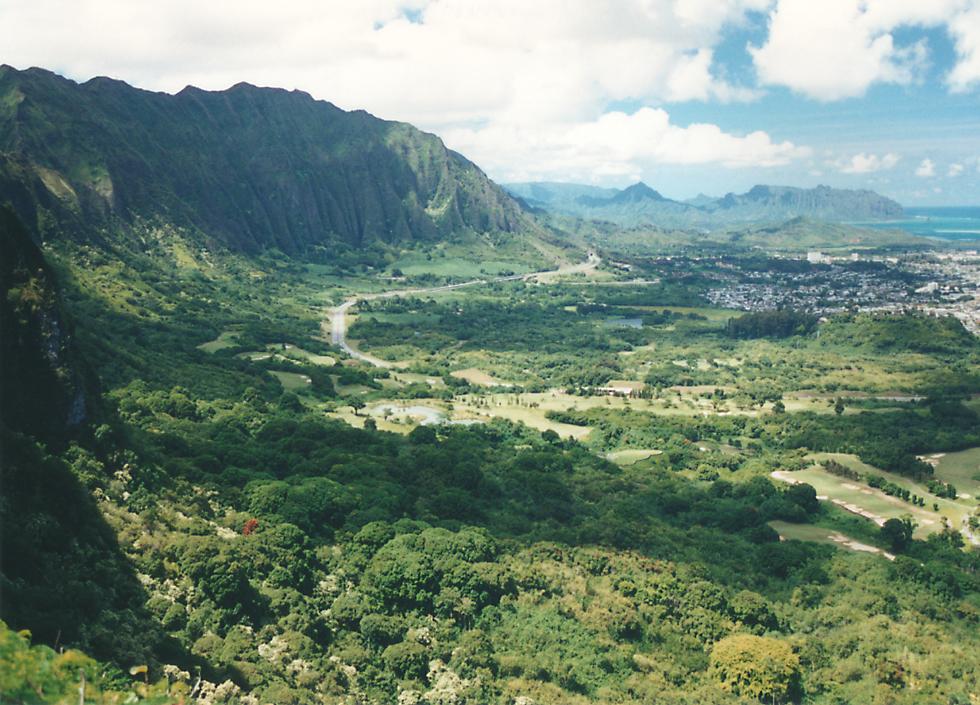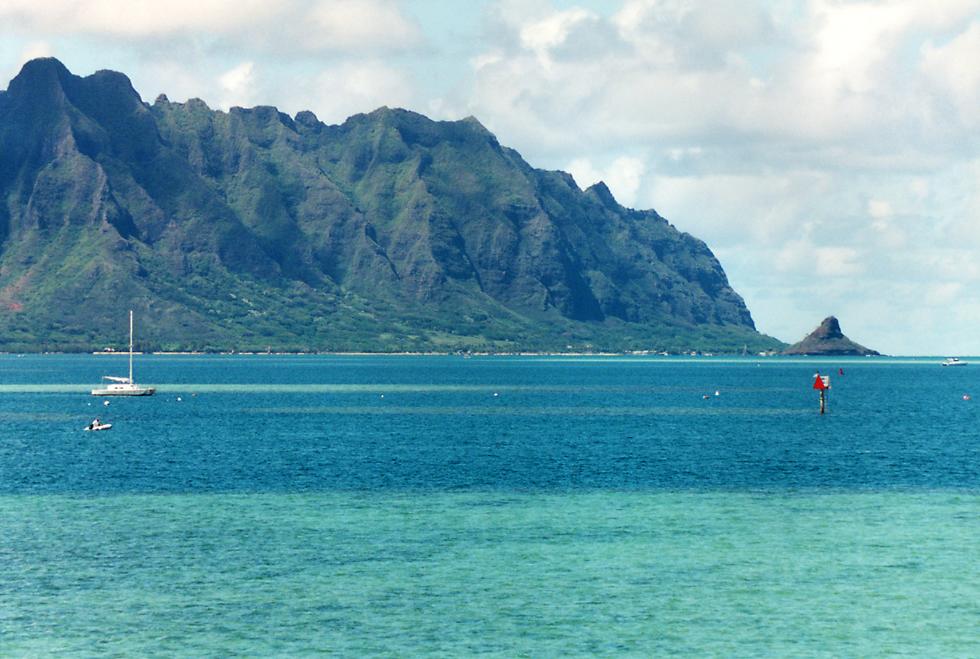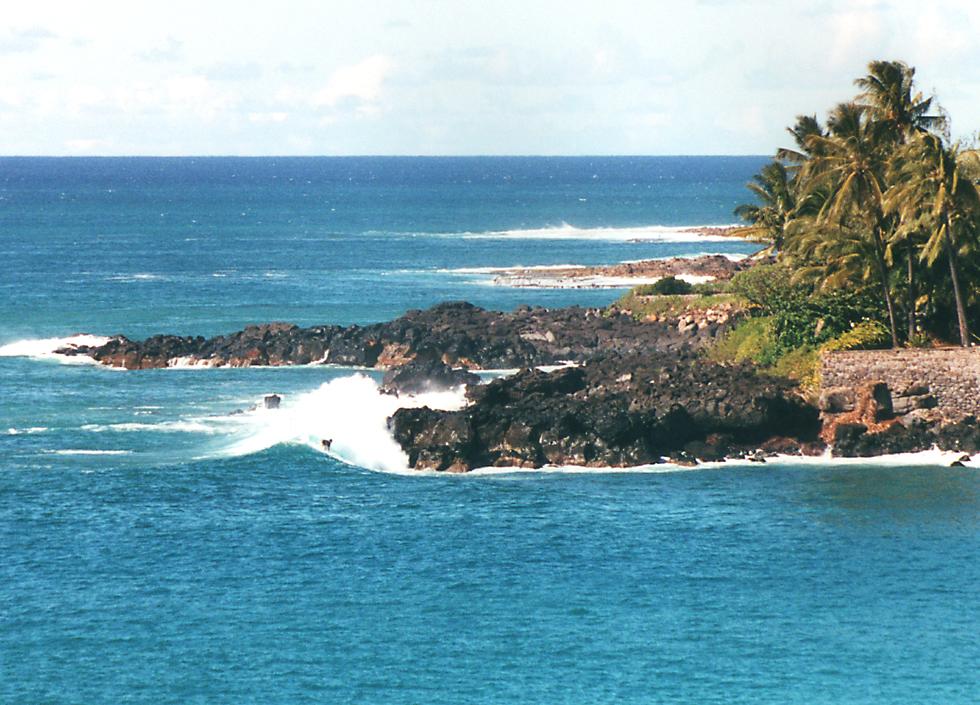Highlights of Oahu
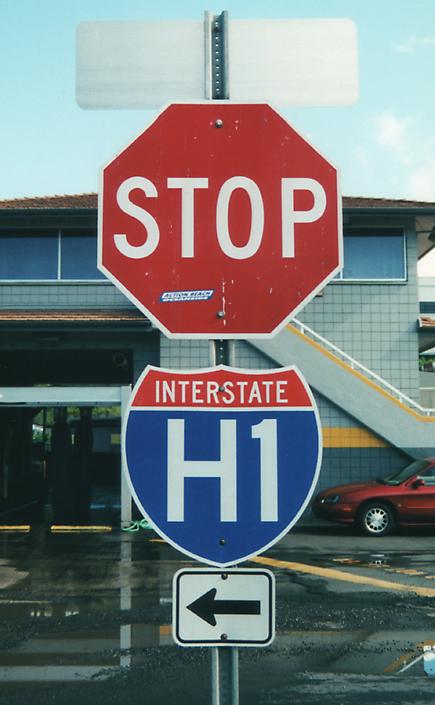
Hawaii might officially be the fiftieth state of the USA but somehow I have a hard time seeing this little slice of tropical paradise as part of America, just as I can't really believe that all of those far flung French colonies around the world are actually part of Metropolitan France. It doesn't seem to make a lot of sense that these distant places are supposed to be one country, and the unsavory way Hawaii was acquired from its original inhabitants makes things even more difficult to swallow. This sign which confronts new arrivals as soon as they step outside Honolulu international airport sums up this nonsensical situation very nicely - an interstate highway which doesn't lead to another state! Of course this is just another legal fiction, cashing in on federal government assistance for the American interstate highway system. |
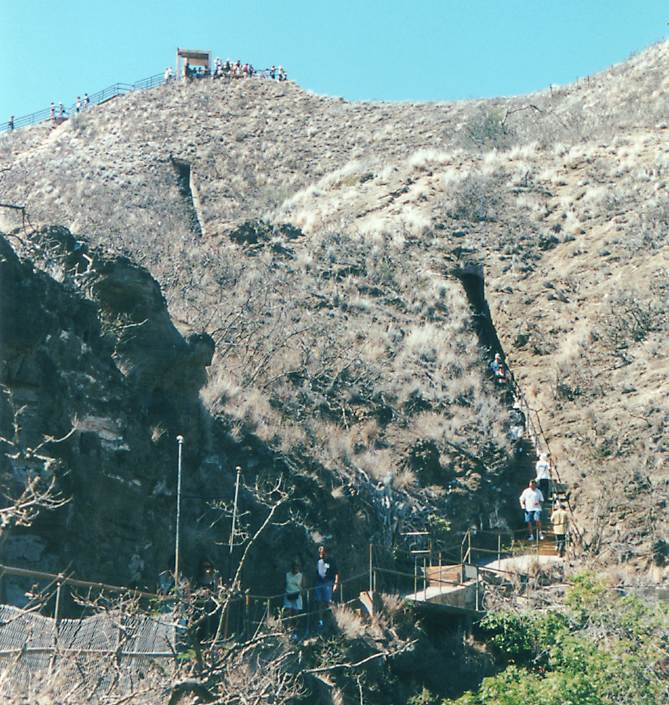
Well, what's done is done and I don't expect this piece of land grabbing to be undone anytime soon, so there's nothing for it but to sit back and enjoy the ride - meaning in this case to enjoy the scenery and other attractions that make Oahu such a popular place for tourists. Most visitors stay in Honolulu, and one of the nearest attractions is Diamond Head, which is not just scenic on the outside but is also worth visiting on the inside. It's the shell of an old volcano, you can take a 10 or 15 minute walk across the arid interior and then climb up to the rim where there are some old military gun emplacements. The interior of Diamond Head is still a military reservation, which might go a long way towards explaining why you must leave before it gets dark, a great pity since it must have excellent views of the sunset. Some of the first European visitors to Diamond Head thought they'd struck it rich, mistaking calcite crystals on the volcano's slope for the diamonds which still give the place its name. |
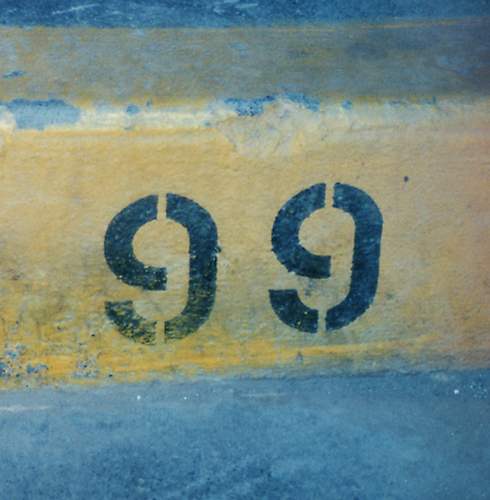
You should carefully consider whether it's a good idea to bring grandpa and grandma along for the trip, since it can be a hot and dry walk across the crater floor and the haul up all of those steps to the top is quite strenuous. |
|
The reward is an excellent view over the flesh pots of Waikiki, which I studiously avoided in favor of some decidely lower rent accomodations slightly further up the hill. Over 75 percent of Hawaii's visitors stay at Waikiki, but I decided to venture a little further afield by driving around the island and also spending a few days on the Big Island of Hawaii. |
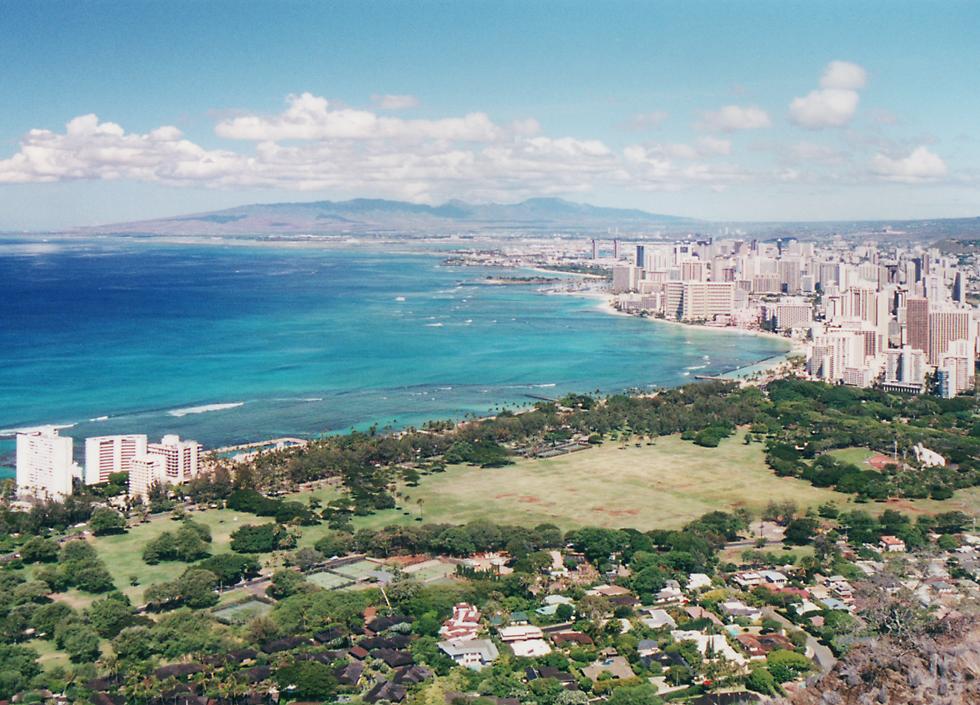
|
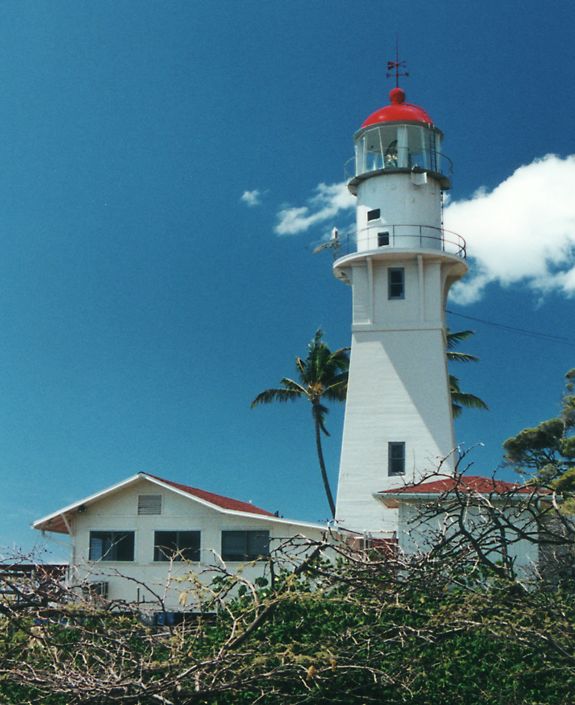
The Diamond Head lighthouse is very scenic, it was originally built in 1899, then rebuilt using reinforced concrete in 1917 - though the iron lantern room, together with the fresnel lens imported from France, are still from the first structure. The lighthouse was put on the national register of historic places in 1980 and is still active today, though the original kerosene light source has been replaced by modern equipment. As well as continuing in its original function as a navigation aid, it's also used as the finish line for the biennial Transpac Yacht Race, which begins at Long Beach in California. |
|
As well as Diamond Head, Oahu has several other military installations, the most famous of which is undoubtedly Pearl Harbor. At the start of world war two Pearl Harbor was the headquarters of America's Pacific Fleet, and it was here on December 7, 1941 that Japan launched its infamous raid which brought the United States into world war two. It's well worth a visit to the iconic memorial built in 1961 which straddles the remains of the battleship USS Arizona. It's interesting to view the memorial from the outside and also to go inside where you can look out over the ship and see the names of the 1177 sailors who died on the USS Arizona during the attack. |
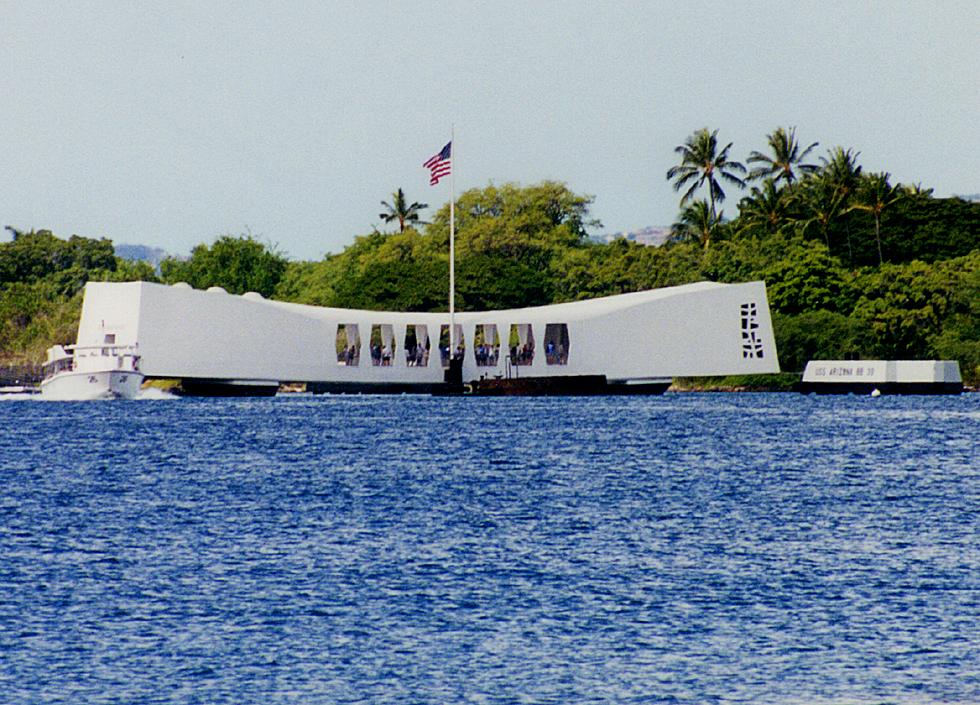
|
|
The USS Arizona memorial lies close by, adjacent to the white mooring berths along "battleship row" at Ford Island. |
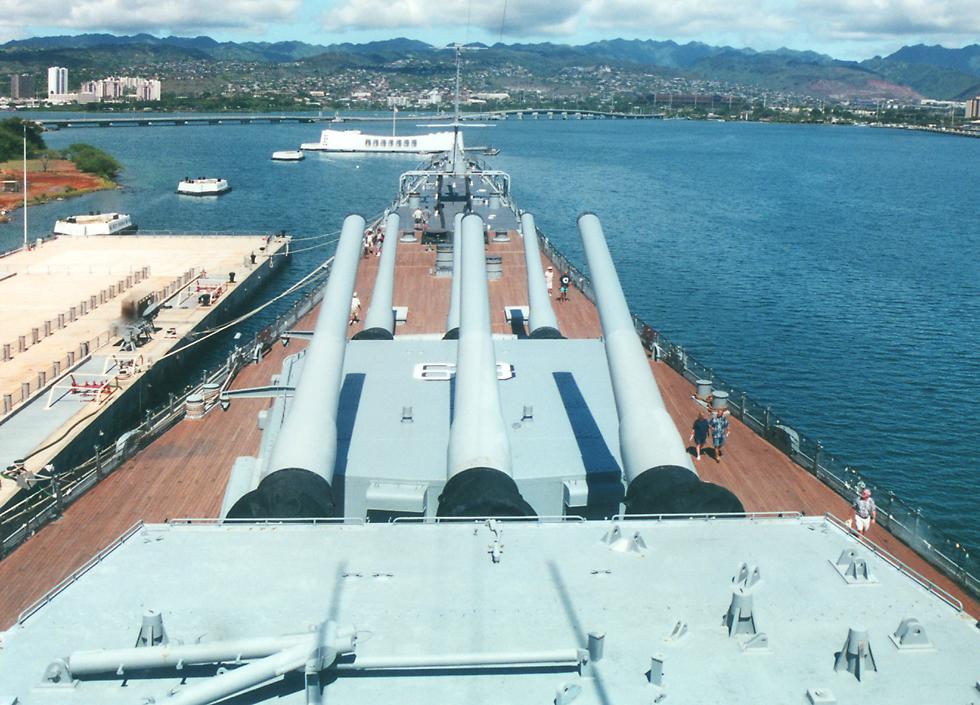
|
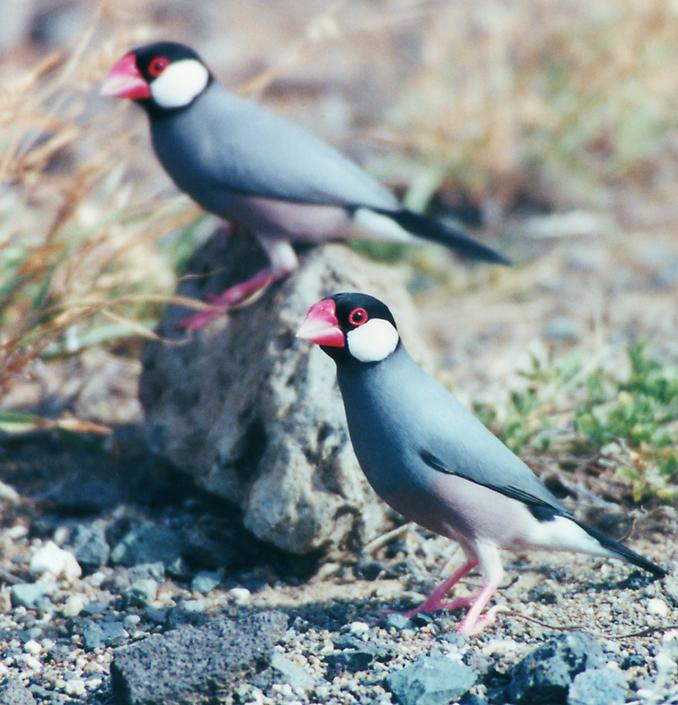
It's also possible to see quite a bit of birdlife, though again there's trouble in paradise, since about half of all endemic Hawaiian bird species have been wiped out since Europeans arrived, and therefore almost all of the birds visitors will see are foreign. The birds in this photo are Java sparrows, but among other introduced species you can also see khalij pheasants from Pakistan, mynas and red-vented bulbuls from India, northern cardinals from North America and red-crested cardinals from Brazil. It's thought that several of these species were deliberately released cage birds whose owners probably thought they made a welcome addition to the local fauna and didn't know or care that they compete for the same food as native birds and therefore crowd them out. |
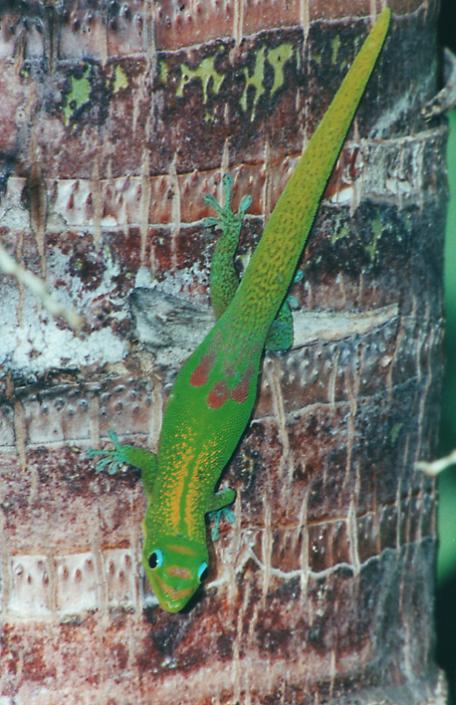
The introductions aren't restricted to birds, either. Many species of reptile, including chameleons and no fewer than seven species of gecko, like this gold dust day gecko, have been released into the wild. Nature Strikes Back and is exacting some revenge on careless humans, however. Tiny but incredibly noisy coqui frogs were introduced from Puerto Rico in the 1990s and have spread quickly, driving many people to distraction with their relentless high-pitched nocturnal calling. |
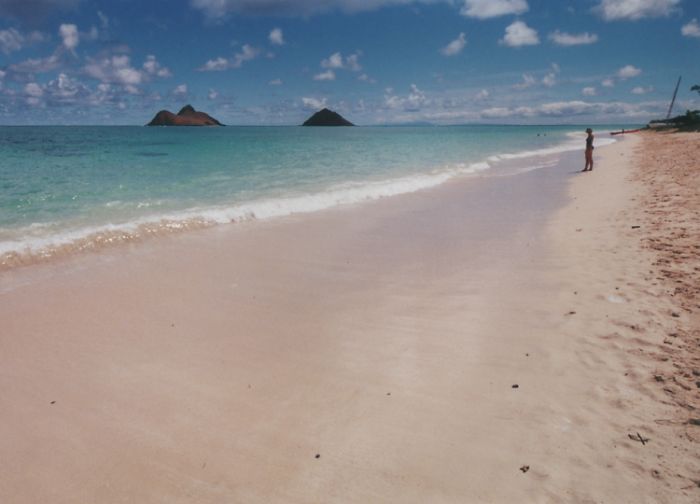
Just a little further along the coast you'll find Lanikai Beach, which has a shallow, gently sloping sandy bottom and is much safer for swimming. In the background, the small offshore islands of Mokumanu and Mokulua are sanctuaries for sea birds like sooty terns, black-footed albatrosses and frigate birds. |
|
From the Nu'uanu Pali lookout you can see Kualoa Point, which has the same sort of scoured volcano cliffs as Nu'uanu Pali, but with the added attraction of a waterside location. |
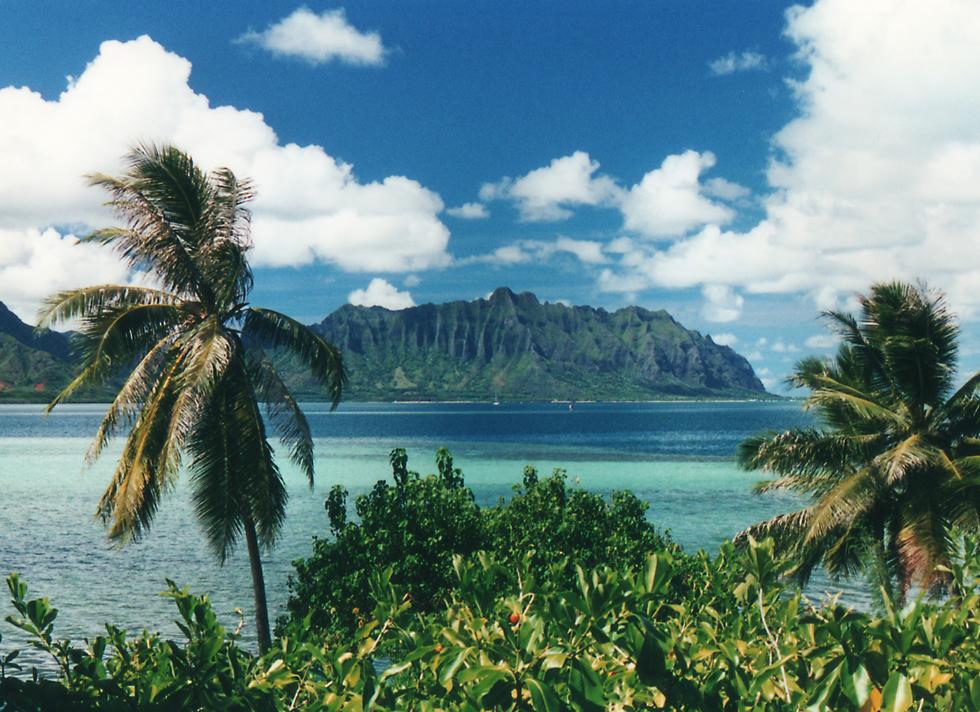
|
|
There are a few other picturesque sacred places around the island, though I can't remember exactly where this one was. |
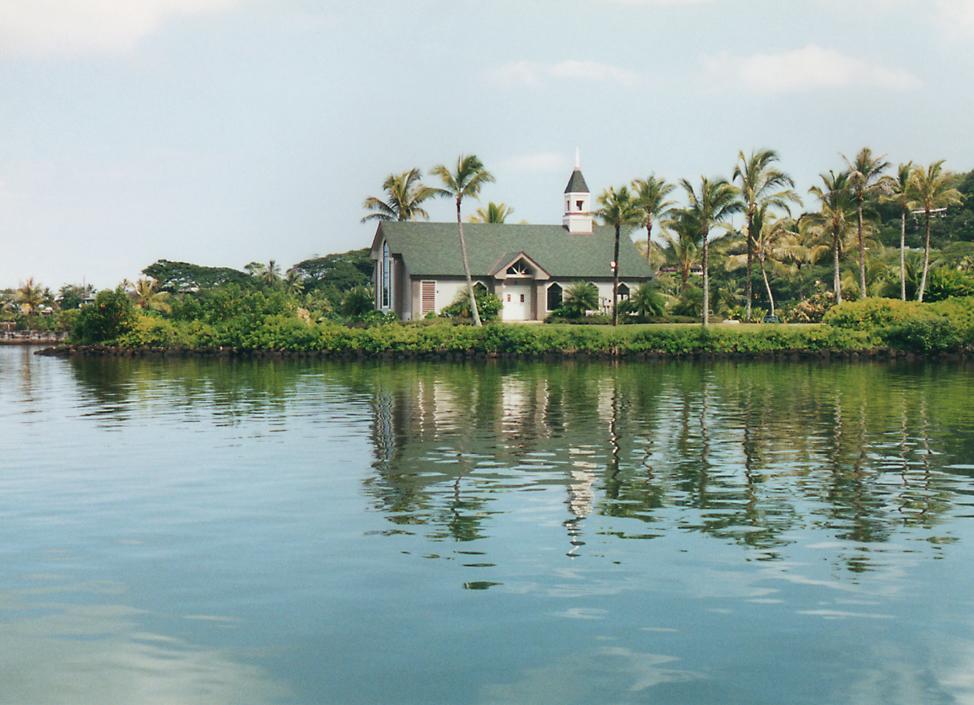 |
|
And the Banzai Pipeline is the Kaaba of this Mecca. The North Shore is at its most spectacular during winter when waves reach 30 feet or more high, however even though I was there during summer when the surf is at its most tame, it's still a good spot to spend a few hours watching the skilled practitioners of this art do their thing, including classic moves on big waves, cutbacks and top turns, aerials and, if you can lower yourself for such a non-traditional activity, even boogie-boarding on the big waves. It's enough to make you want to retire here and take up this surfing life. |
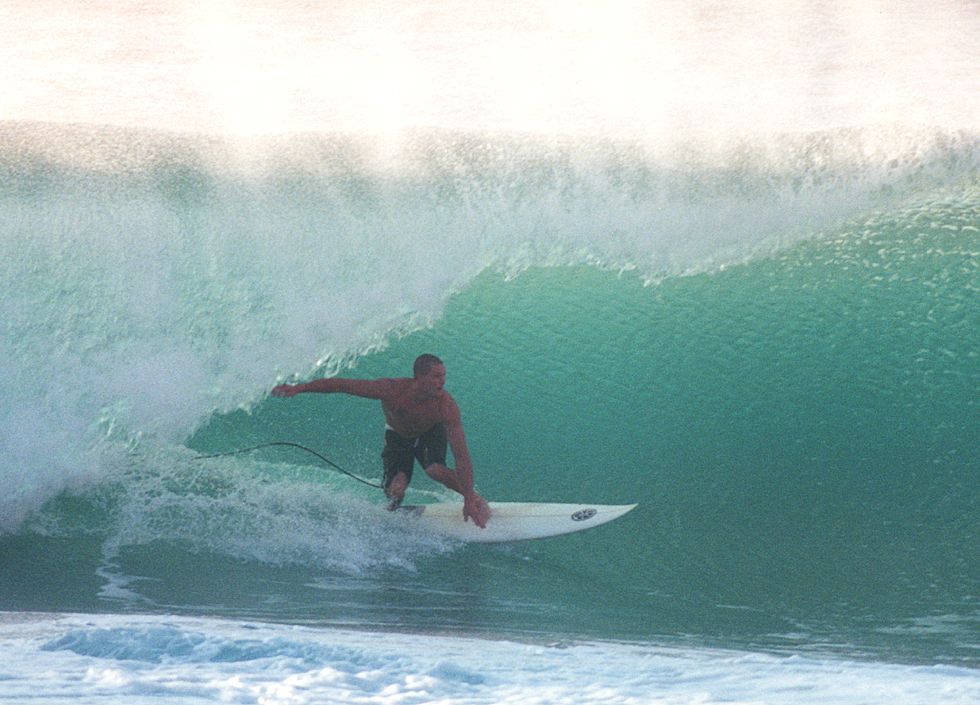 |
